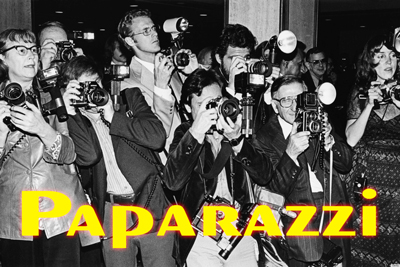
Today, the word ‘Paparazzi’ gives us the picture of a bunch of photographers, who take pictures of high-profile people, such as politicians, film stars, famous players and other celebrities, especially while subjects go about their usual life routines. Paparazzi tend to make a living by selling their photographs of public interest to media outlets. Since they generally hunt in packs, the plural ‘paparazzi’ is very much more common than the singular ‘paparazzo’.

The inclusion of the word paparazzi into the English language is said to be tied to an Italian film ‘La Dolce Vita’ (1960), directed by Federico Fellini. The film relates the story of a jaded journalist, Marcello, and his photographic colleague, Paparazzo. After the movie was first released in Italy, the word paparazzi became synonymous with the intrusive photographers who chase the stars to get that revealing act on film.
Later, Fellini claimed that he wanted to capture the paparazzi-inspired events, where reporters often begged involved parties for a story. However, it was the freezing-frenzied movements in the pictures captured by the photographer, that sparked viewer interest and immediately the name became a part of the language to mean the new breed of intrusive snappers.
The Italian family name Paparazzo is believed to come from the word ‘papateceo’, which means, a very large buzzing insect. The surname itself is of no special significance, as it is said to be a common one in Calabria, and Fellini is said to have coined it from a travel book, "By the Ionian Sea," in which occurs the name of hotel owner Coriolano Paparazzo.
